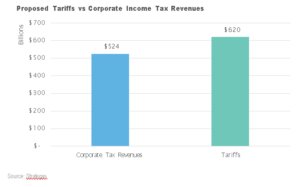Summary
In this video, Angela and Anthony present the Worthen Financial Blueprint, a comprehensive eight-step guide to achieving financial clarity and living happily ever after. They cleverly compare each step to building a castle, making the process relatable and engaging.
Starting with defining your values and financial purpose, they emphasize the importance of aligning your values with your spending habits.
They then dive into crucial steps like establishing a strong foundation with term life insurance, saving one month of expenses as a safety net, and tackling high-interest debt using the debt snowball method.
As the castle takes shape, they discuss building an emergency fund and increasing it to cover three to twelve months of expenses.
The gatehouse represents investing 20% of your income towards retirement, while the towers symbolize funding various goals such as college savings or low-interest debt repayment.
Finally, they emphasize the significance of reassessing values and goals periodically to ensure a fulfilling life.
If you’re ready to implement YOUR financial blueprint, start by creating your free personalized financial assessment offered by Worthen Financial Advisors.
Let’s start building your castle today!
Full Transcript
Angela:
At Worthen Financial Advisors, we use a financial blueprint, which is a series of eight steps to guide people through beginning to end, from defining their financial purpose to living happily ever after. Because that’s what most people’s goal is, is to live happily ever after. We have put those steps in kind of coordination with building a castle. You’re building your castle, and let’s talk about those eight steps to get from beginning to end of financial clarity, feeling good about where you are and having a plan in place for the future. Step one is, just like with building a castle, you’ve got to scout the land and find the perfect spot to place your castle. Acquiring the land, we associate with defining your values and your statement of financial purpose. You want to talk a little bit about that?
Anthony:
Yeah, absolutely. There’s a bunch of different ways to define your values, and there’s a bunch of exercises online that you can Google, but we have a values exercise that we put our clients through, and it starts with a list of probably 50 words and we narrow it down to 10. These values are the lens that we look through whenever we’re thinking about goals, expenses, and just kind of everyday life. Whenever we make sure that these goals and these expenses are fit through our lens, our values, it helps us really feel good about how we’re using our money and what we’re doing day to day.
Angela:
Aligning your goals and values with how you’re spending your money. Okay. Step two, after you’ve acquired your land, which is defining your values, you are going to lay the foundation for your castle. A strong foundation, financially speaking, is term life insurance. If anyone depends on you financially, you need term life insurance. If you’re a stay-at-home parent, you need term life insurance, and that is step two.
Anthony:
Absolutely. I like that. If you think about it, the foundation, term life insurance kind of go hand in hand. If there’s a storm that were to ever come you whatever happens to the house, you want to make sure that that foundation is sturdy. And so, just like the foundation, you want to make sure that you have that life insurance in place if there were a storm ever to come.
Angela:
Yes. Step three of building a castle, which I’ve become the castle expert during this exercise, but step three is digging a deep moat and what do we associate with step three, financially?
Anthony:
A deep moat is one month of expenses. What we want those one month of expenses to serve is just in case there’s ever a slight emergency that might happen, maybe a car gets towed, an unexpected expense, just to make sure that we’re not going back into debt. It kind of gives us a little buffer to work off of whenever we’re going to start working on our next step, which is building strong walls and paying off high interest debt using the snowball method.
Angela:
Love it. We’ve got our expenses, one month of expenses saved in a bank account, checking or savings. Usually savings is better to just kind of tuck it away and you don’t see it. Then we’re going to attack that high interest debt using the debt snowball method, as Anthony said. And you can Google, there’s tons of spreadsheets and tools and things that you can download to work through that debt snowball, but just start on the high interest like eight to 10% interest and above. That’s what you’re going to attack next and pay it off. We’ve got strong walls, we’re going to connect a drawbridge next, what does that look like?
Anthony:
We’re going to increase that one month of expenses that we talked about earlier, to three to 12 months. This is going to be our number that we keep. If we ever use that emergency fund for anything, we want to replenish back to that number, and it’s going to help us with unexpected expenses. If something were to happen, you lose your job, you have enough time to just take a minute and make sure that you’re not just jumping into the next available job, you’re jumping into a job that fits you and your family.
Angela:
And it might take you a little while to find a job, not in today’s economy, but sometimes it does. Usually it does. All right, number six, we’re going to construct a gate house, which is the strongest part of a castle, p.s. And it’s the only part that, the only door that faces the front. And so that’s where you’re attacked at. For your gate house, we associate that with investing 20% of your income towards retirement.
Anthony:
That 20%, you basically just kind of want to look at your different sources and where they’re going and kind of add them up and divide that by your gross income and make sure that number’s around 20%. That’s just a good rule of thumb, but it kind of varies for each person. Make sure that you kind of talk to a financial advisor if you’re unsure of what your number should be, making sure that it fits with what you have in mind for your goals.
Angela:
Right, yeah. Back to step one, look at your why to find your values and things. All right. After you’ve got a gate house, it’s time to add the towers, and this is where everybody’s castle starts looking a little bit different.
Anthony:
Absolutely. It’s different for everyone. A couple of different things that we can think about is college, that low interest debt that we may still have, maybe spending more time vacationing, but it’s more about building these towers that fit with our values. It could be one specific tower or it could be a bunch of different towers that you’re funding at the same time.
Angela:
Love it. You’ve paid off your high interest debt in step four, and this is attacking that low interest debt at the same time. These are meant to be worked together to save for college, save for a wedding for your kids, things like that. Then we get to step eight, live happily ever after. That also looks different for everyone. I would say between at least step seven and step eight, go back and do the values exercise again, or a different one. It’s probably been a few years before that you did this, when you started working on these steps until you get to step eight. And things change, people change, your goals change. So start over. Look at your why you’re doing this, what you want your life to be.
Angela:
I think that what we see when we’re working with clients is it’s a very different experience when they don’t have the burden of debt and the worry of money on their shoulders anymore. Then you’re free to dream about starting a business, traveling, buying a second home, just things that you really could not think about when you’ve got maybe young kids and just starting a job or you’ve racked up a bunch of debt and you have all these other responsibilities. Live happily ever after is step eight, and that is what we hope that you do. If you would like your own personalized financial assessment, look in the notes below and get started today. Anthony, you want to tell them just a little bit about what’s involved with that?
Anthony:
Absolutely. Yeah. You’ll go ahead, follow the link, you’ll make a login, you’ll download the app. It takes eight minutes to go through onboarding, and then after that, you’ll receive your free financial assessment video from Worthen Financial Advisors within one business day.
Angela:
We hope to talk to you soon.










 by Launch Kits
by Launch Kits